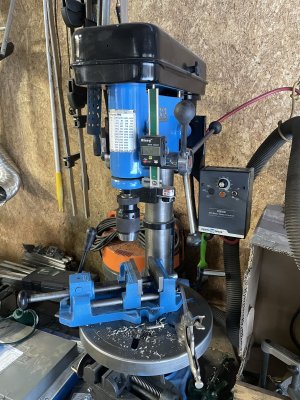I have a 22 inch drill press but find it kinda large for some of my smaller projects. I use # size drills often. I was talking about getting something smaller. A friend kindly gifted me this 11 inch Canadian made Beaver for which I'm most thankful. I think it had been in storage for awhile and was pretty grungy, had some drill holes in the table and some surface rust. I stripped it down and gave it a good cleanup and fresh paint. Filled the unwanted holes. Some new spindle bearings, a keyless chuck and made a new down feed handle. I think it will work out well. Phase two of the project calls for variable speed. If I can find one, a 1/2 horse 3 phase motor with a VFD. Variable speed is some new territory for me so I'm open to comments from anyone who has experience?




Last edited:

